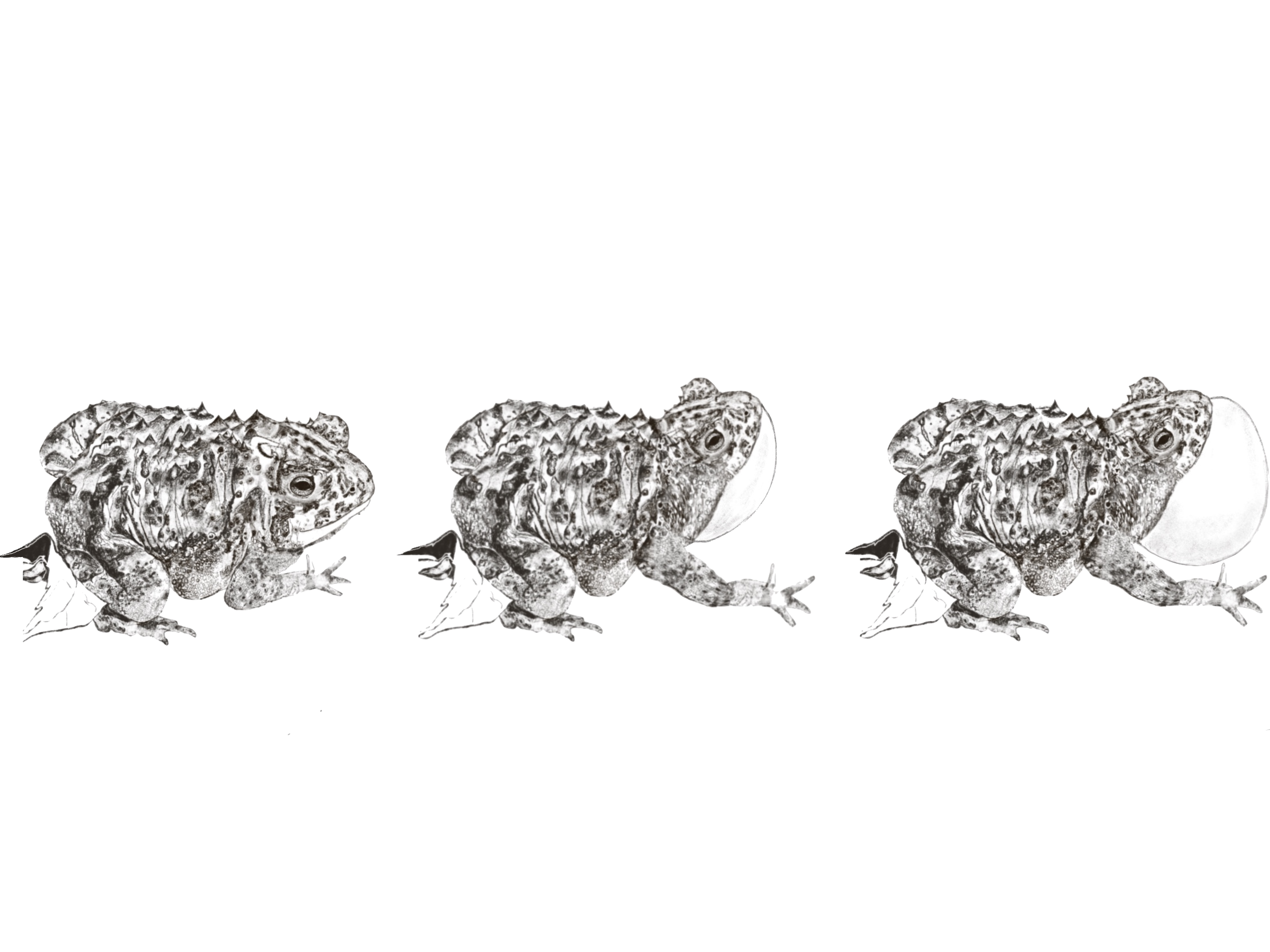a frog of chorus
How to record a voice for bioacoustic analysis:
1. First, listen for the species you are trying to document. The goal here is minimal interference: see how close you can get without frightening off the frog. Make contact and remain invisible at the same time.
2. Busy yourself with the mechanics of transduction. Soundwaves should end up converted into electricity in your brain and into a .wav file in your hand.
3. Once sufficient vocalization is captured, speak into the microphone the date, species, elevation, temperature conditions, and any other details that may prove relevant. One day soon, these species may be added to those already extinct.
Short animation shown at Small File Media Festival 2022. Winner for categories "Molecules" (1 mb per minute). Sounds sourced from recently extinct frogs and their recordists in the Atlantic forest.
Thanks to Boana albopunctata and Adenomera marmorata. Thanks to the Fonoteca Neotropical Jaques Viellard for the following endangered and extinct recordings: Boana cymbalum, Hylodes magalhaesi, Physalaemus soaresi (may you fight the good fight, rest in peace, and reincarnate the frequency openings left behind)
Thanks to Boana albopunctata and Adenomera marmorata. Thanks to the Fonoteca Neotropical Jaques Viellard for the following endangered and extinct recordings: Boana cymbalum, Hylodes magalhaesi, Physalaemus soaresi (may you fight the good fight, rest in peace, and reincarnate the frequency openings left behind)

